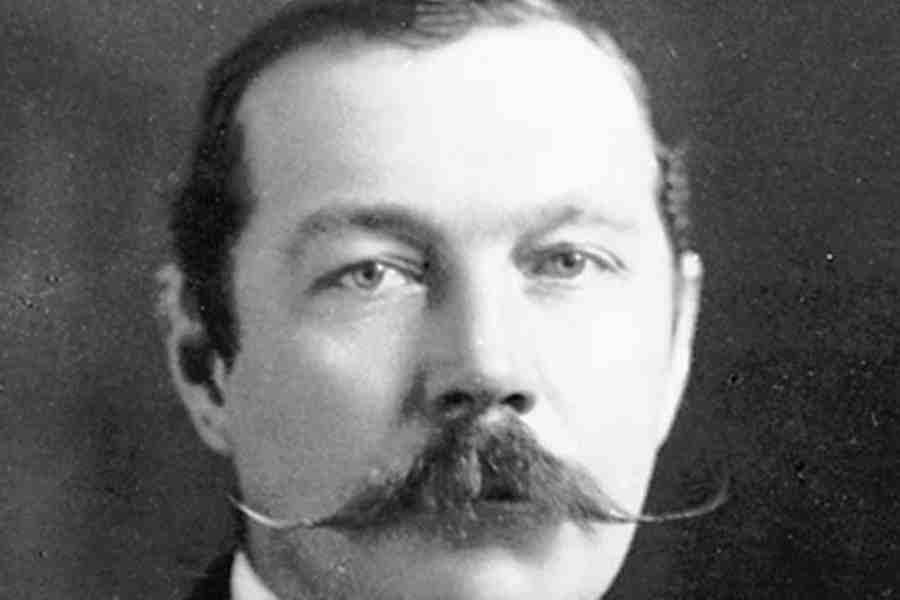Sherlock Holmes, invented 136 years ago by Arthur Conan Doyle, continues to enchant readers and viewers worldwide, while the contributions of Indian culture and history to the Holmesian persona lie unacknowledged in cinematic adaptations or Holmes’ wide-ranging discipleship known as Sherlockiana.
The world’s first consulting detective was, doubtless, an exemplar of the British Empire or, more recently, of Britain’s neoliberal quest for a return to global greatness. Nevertheless, questions of how much Holmes’ creator gleaned from India, and why that debate is underrepresented, vegetate in an “imaginary waiting-room of history”— to cite Dipesh Chakrabarty’s diagnosis of J.S. Mill’s historical views on colonial India. Sherlockiana’s cognitive biases are underpinned by a Eurocentric territorial bias — the absurd principle that since Holmes personified imperial rationality and emerged when India was imperially perceived as guided by fragmented sociocultural emotions and, thus, unprepared for democratic self-rule, India is antithetical to the Holmesian sphere. Therefore, envisioning Holmes as embedded entirely in a British milieu is manifestly erroneous on four strong grounds.
Doyle’s second novel, The Sign of the Four, reprised Wilkie Collins’ The Moonstone. The eponymous Moonstone — loosely modelled on the Kohinoor — goes from Somnath into the possession of “Mahmoud of Ghizni” to “Tippoo, Sultan of Seringapatam” to Colonel Herncastle to his niece, Rachel Verinder, in England and back to three “Brahmin” priests of Somnath. In Doyle’s reprisal, the Great Agra Treasure lands in the possession of Major Sholto and Captain Morstan who rob their colleague, Jonathan Small, of his share. Small, the repressed colonial, returns to England followed by his fiercely loyal ‘savage’ ally, Tonga, causing Sholto’s death by guilt and more havoc in the imperial capital. From Holmes’ Trichinopoly cigar to the Pondicherry Lodge of the Major’s son, Bartholomew Sholto, and Thaddeus Sholto’s Indian hookah in a princely boudoir, Doyle’s comprehensive inventory of Indian minutiae anchors his political allegory.
How deeply Doyle thought and felt about India, despite never visiting the subcontinent, is also discernible in his other (Anglo-)Indian characters. Some are doctors, like Grimesby Roylott in “The Adventure of The Speckled Band”; others have had military stints in and around India, like Colonel Barclay and James Wood in “The Adventure of the Crooked Man”, besides Watson himself.
What Anna Neill calls Holmes’ “savage” genius was an outcome of not a purely rationalistic science of deduction modelled on Victorian scientists but one that adequately accounted for parascientific aspects like intuition and lucid dreaming. Several examples in the Holmesian canon show Watson calling Holmes’ deductive powers an ‘art’ or — as Holmes himself concedes— a precognitive, ‘intuitive’ method. Yet, Doyle’s self-avowed gleanings from the theosophical, Buddhistic and Upanishadic theories of Alfred Sinnett and Helena Blavatsky, as reported in his autobiography, Memories and Adventures (1924), have been ignored in favour of empiricist understandings of Holmes, until very recently.
Although Holmes never reveals what “vegetable alkaloid” Tonga uses to poison his darts, Doyle’s short story, “The Adventure of the Devil’s Foot”, contains toxicological clues trailing back to India. Close historical and empirical analysis of Doyle’s fictional African poison, the devil’s foot root (Radix pedis diaboli), and the Indian
aconite (or bish) shows striking resemblance between them, bolstering the inference that Doyle drew heavily from Victorian Indian toxicology.
Detecting the total expanse of Indian clues in Doyle’s world, ‘Holmesian’ science and intuition need to amalgamate. It is one thing to avoid being euphoric about Doyle’s enormous debt to India lest that be misappropriated by majoritarian identity politics. It is quite another to completely suppress it in the interest of posthumously preserving the British imperial purity of an otherwise fictional character.
Arup K. Chatterjee is the author of The Great Indian Railways and other works











